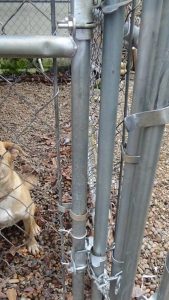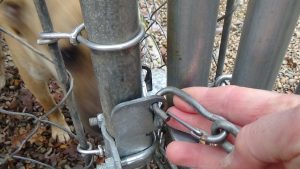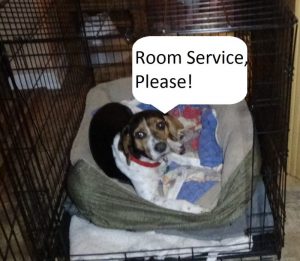You may have noticed that you have received several notices that the Luna page has been published. That is not wonky software this time, it’s me trying to make things better. Let me explain.
When we first started posting information about the foster dogs, it was to Facebook. I started with one FB page for Cochise, and he posted updates on all the foster dogs. But that quickly became unworkable as people tried to filter through the posts looking for info on ONE dog. FB filters stuff and does not show everyone all that is available. Then I built each dog an FB page of their own so people who were interested in that dog could go find photos and short stories. That worked okay. But it was a lot of work, and each time we started a new dog it took a lot of time to make people aware that this dog/page was available and build traffic to it. And … there ARE actually a few people out there who do not do Facebook!
So I started a blog as a section under my DougBittinger.com web site. Again I posted one page per dog and added stuff to it as things developed. That actually worked better than Facebook. The only down side was that I could only publish a dog page once, so only one notice could go out to subscribers — I could not notify subscribers of updates.
So I started adding separate posts with updates and Doggy Tales, which notify readers when published. Each of these linked back to the dog’s main page, so interested parties could go check out the dogs details. The problem came when someone wanted full details on a dog, but did not want to sift through a dozen articles on a tag list to get them. They preferred the “everything on one page” format. (sigh)
Also, having the foster care blog as a section of my personal/professional blog made it difficult to send people direct links to specific pages and posts. That involves DNS addressing issues, and I won’t go into that. But a stand-alone blog for Piney Mountain Foster would solve that problem. So I built one, and am now in the process of moving all content over to the new home and (this is the time consuming part) checking and fixing links and photos that still want to point back at the old location and will disappear when I delete those old locations. I do not want half the site going blank all of a sudden!
The new installation of my e-mail subscriber notice sending utility DOES have the ability to let me re-publish things, so a notice is sent when I UPDATE a page – if I want it to.
Given that ability, I am going back to keeping almost all of the content on each dog in one place. Yes, the page gets long on some dogs because they’ve been here a long time or because a lot has happened, but it is easy to find by rescues who are considering accepting one of our dogs. Long doggy tales are spun off to a separate post, but I include a summary blurb on the main page with a link to the full Doggy Tale.
Therefore, if you see an e-mail notice that the same page has been published a couple of times this week, it’s not a melt-down but something new I’m trying. If that proves too annoying to you: my subscribers, please do not unsubscribe, but let me know. I’ll add updates to pages as they happen but only send out notices once a week. Just let me know your preference. Thanks!
Doug



 Fostering is the short term care of an animal you don’t own. Programs vary: some will provide everything you could need: equipment, bedding, food, medications, everything. Some provide only veterinary care. Most are somewhere in between these. Before joining a fostering program ask what is provided to you and what you need to cover. Get it in writing. Also ask if they have written procedures that you can study to see how they do what they do, and who is responsible for what within the organization. Any organization that is not organized is going to be difficult to get along with.
Fostering is the short term care of an animal you don’t own. Programs vary: some will provide everything you could need: equipment, bedding, food, medications, everything. Some provide only veterinary care. Most are somewhere in between these. Before joining a fostering program ask what is provided to you and what you need to cover. Get it in writing. Also ask if they have written procedures that you can study to see how they do what they do, and who is responsible for what within the organization. Any organization that is not organized is going to be difficult to get along with.






